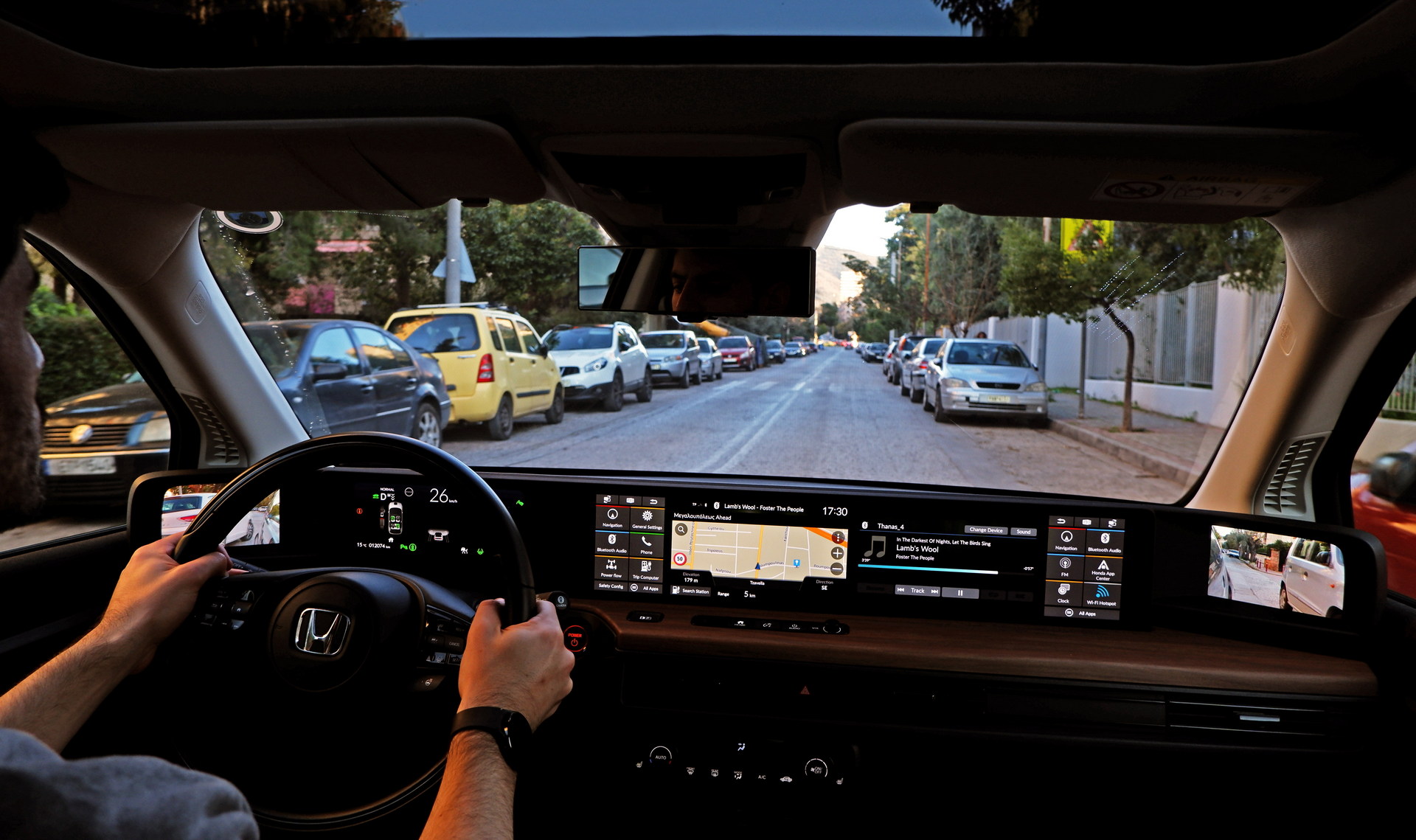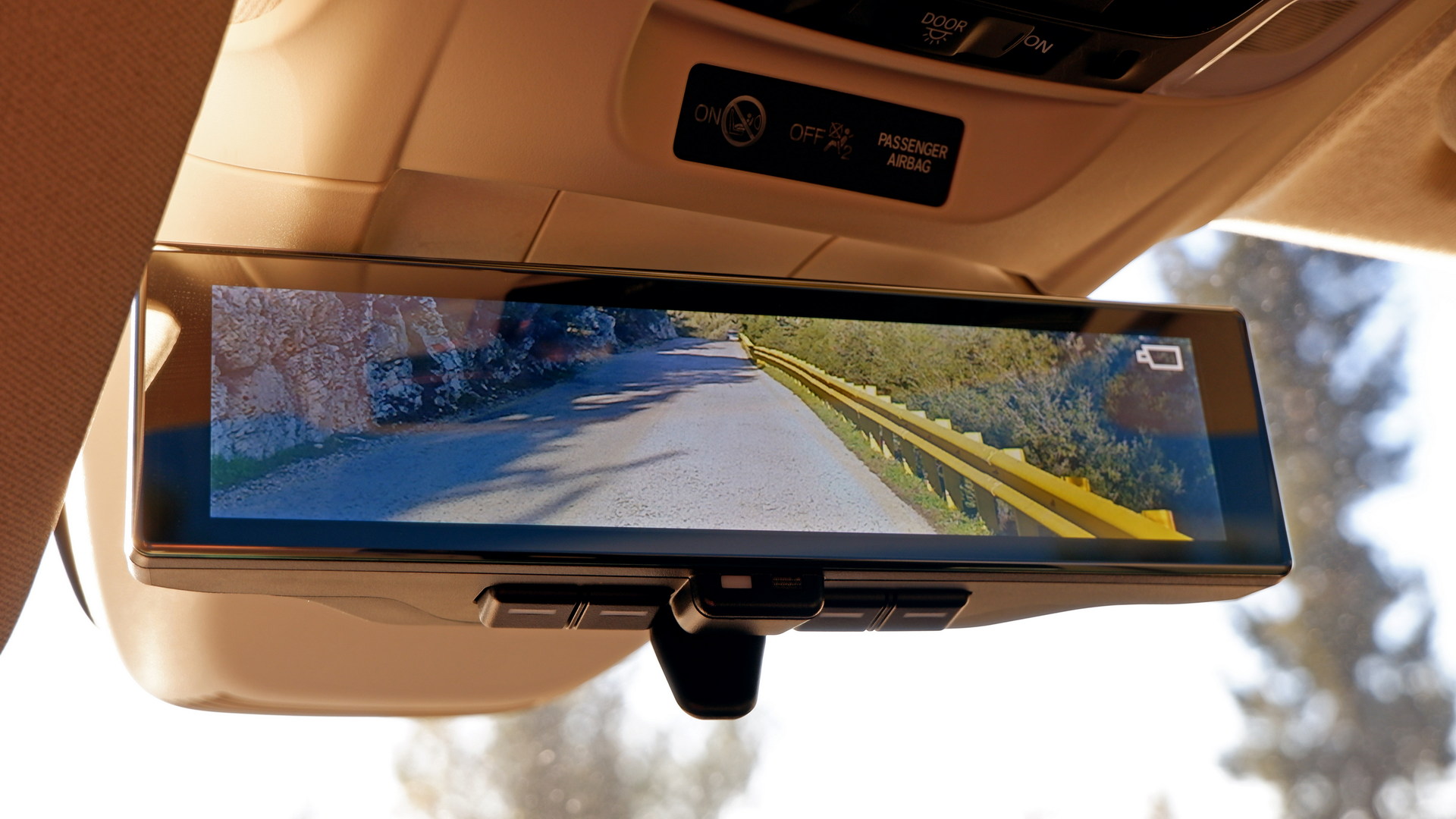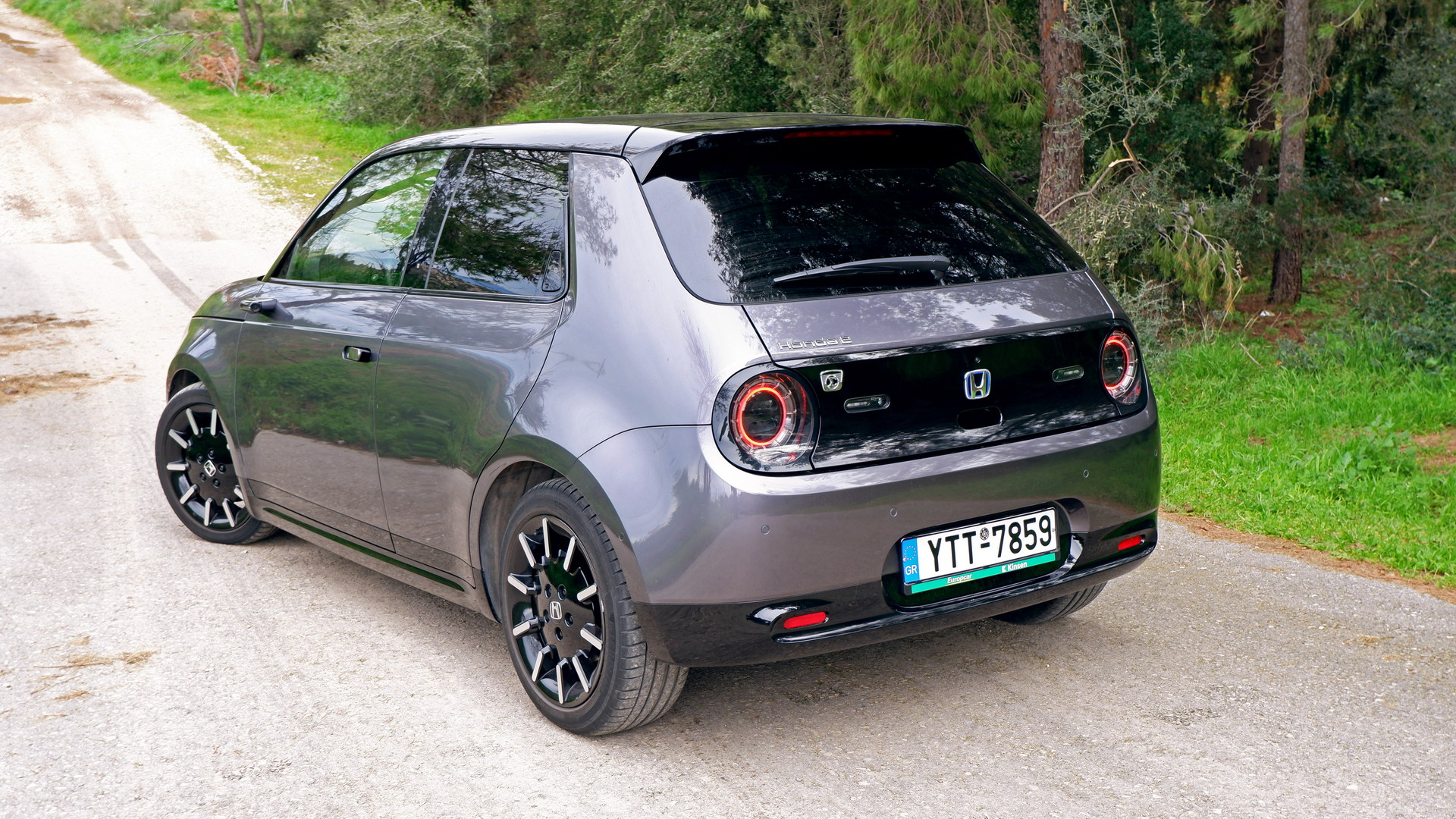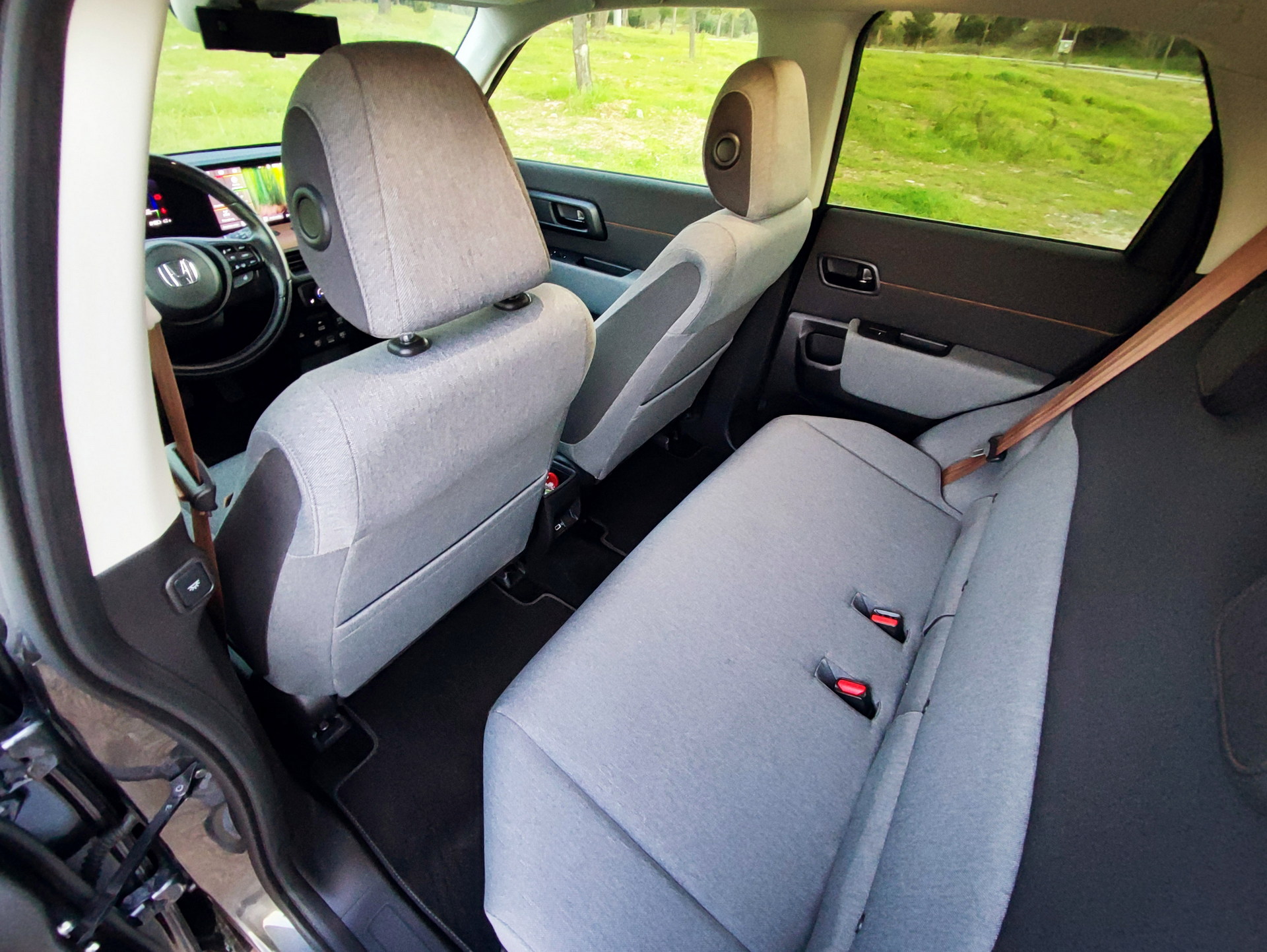Last week we got our hands on a Honda e press car and asked our readers to send us any questions they may have about it. We received many interesting questions about the charming but also pricey EV from Japan, so we will try to answer most of them here.
Is the Honda e completely quiet?
Despite its compact size, Honda did a great job in soundproofing the Honda e which in combination with its refined ride, lack of aerodynamic noises, and silent electric powertrain make it very quiet both on the highway and in the noisy city streets. You could have a nice conversation and also relax while being in traffic. By the way, its quietness prompted us to test the eight-speaker premium audio system that is standard on the flagship Advance trim. Despite the speakers looking small, the bass was strong and clear creating a good overall experience on par with the car’s character – in that price segment, we wouldn’t risk getting the lower-spec sound system.
How distracting is the panoramic dash display at night and can you turn it off?
I am not a big fan of huge infotainment screens and I feel good when they offer me the option to turn them off completely when needed. Surprisingly, the multi-screen setup in the Honda e didn’t bother me at all since it adjusted well with the lighting conditions and didn’t feel irritatingly bright at night. It looked more like an extended digital instrument cluster with the black background and the darker wallpapers helping a lot.
My experience has taught me that it is not only the size of the screen that matters but also the position. You can get more irritated by a tiny display in the wrong spot than by a larger one that stays out of your field of vision. While the screen in the Honda e seems to be high positioned in the press photos, in reality, it doesn’t feel that way. In fact, the top end of the steering wheel usually hides a small portion of the instrument cluster, proving that the whole screen setup is rather low compared to the large front windshield.
Driven: The Honda e Advance Is A Retro-Futuristic Gadget On Four Wheels
Answering Miknik’s question, yes the dual screens can be turned off (besides the digital instrument cluster and mirrors of course). However, judging from the fact that the Honda e will be mostly driven in urban areas and not so much in dark highways, plus the great auto-dimming of the screens, we don’t expect many people to feel the need to press the off button.
Do we prefer the rear-view cameras over conventional rear-view mirrors and were they odd to use?
The short answer is that I could definitely live with them. I initially approached the mirror-replacing camera trend with skepticism but they proved to be quite usable. The angle of the lens is wide enough to almost eliminate blind spots and the brightness adjusts itself automatically in a very successful way. I could clearly see behind me when the bright sun was shining on the cameras and also during the night. As fellow reader Corky Paul suggested, the ability of the cameras to see in low light was indeed better than the conventional mirrors.
I have to admit that I kept moving my head while parking in a quest to see the lower part of the car from a different angle, which obviously doesn’t work with the fixed image on the screens. However, I didn’t really need to do that since the bird’s eye view camera is good enough for the job. Furthermore, besides helping with aerodynamics, the tiny cameras were advantageous when driving through narrow roads with parked cars on both sides, since I didn’t have to worry about scratching my mirror caps.
Read Also: You Asked, We Answered What You Wanted To Know About The 2022 Kia EV6
What I didn’t like was the central mirror that could turn into a screen in the Honda e Advance trim, showing the unobstructed feed from the rearview camera. In this case, the screen made it more difficult for my eyes to focus and adjust. I also found reflections on the glass being distracting at times, so I kept the mirror in its regular non-digital mode for most of the time.
BarryFastCars would like to see the Honda e next to a Hyundai Ioniq 5
Unfortunately, we didn’t get the chance to photograph it but we did pass right next to a Hyundai Ioniq 5 so we made the comparison. To be precise, Hyundai’s EV is 741 mm longer, 138 mm wider, and 102 mm taller with a 470 mm longer wheelbase than Honda’s supermini.
Is the Honda e as adorable in person as it is in photos?
Yes! It is one of the cars you give a second look over the shoulder every time you park. Surfacing is great and the curved glossy-black panels on both ends are reflecting the environment upside down which is cool. What could be better is the very plasticky feeling of the otherwise premium-looking front end.
What’s going on with the Sports EV concept?
The Honda Sports EV concept was introduced in 2017, just a month after the premiere of the Urban EV concept. While the latter evolved into the Honda e production EV in 2019, the former has not reached the market yet. Despite earlier reports, our take is that Honda created this two-door electric sportscar for show purposes and will likely wait for a few more years before dropping such a vehicle into the market – if at all. Imagine a sportscar with the small 35.5 kWh battery and the limited range of the Honda e – you would likely need a tow truck every time you let loose on a B-road.
Can the Honda e drift?
Neither the 134 hp (100 kW / 136 PS) of the base model, or the 152 hp (113 kW / 154 PS ) of the Advance trim are enough to smoke the rear tires of this 1,527 kg (3,366 pounds) EV, but you can enjoy small drifts when the circumstances are right. In Sport mode with the ESP turned off, the little Honda had some tail-happy moments on worn-off tarmac. That is when the low center of gravity, the 50:50 weight balance, and the quick steering proved to be beneficial, drawing a smile on the driver’s face.
Carenthusiast asked us about the second-row seating and the cargo space
I am 1.84 m (6.04 feet) tall and I could easily fit in the back seat of the Honda e with the driver’s seat in my preferred position. I would say it has decent space at the back when you compare it to other urban EVs and it can seat four adults in relative comfort, although it is more cramped than modern ICE-powered superminis. To be fair, the limited real-life range of around 170 km (106 miles) means that practically no one will be using the Honda e for long road trips.
Boot space is very limited at 171 lt (6 cubic feet). This is slightly less than the 185 lt (6.5 cubic feet) of the Fiat 500 and the 211 lt (7.5 cubic feet) of the MINI Cooper SE. At least it has a practical shape and the rear seats fold nearly flat for when you need to carry more than one small suitcase. For reference, the two soft cases you can see in the picture are the charging cables.
See Also: Would You Rather Have The Fiat 500 Or The Honda e?
Juris Muris asked about the price
The Honda e is small but pricey although it makes up with the generous standard equipment, especially in the Advance variant we drove. In the UK, the Honda e is listed for £34,365 ($45,989) while the Honda e Advance costs £36,865 ($49,334), which is similar to what you’d pay for a mid-spec Honda CR-V Hybrid AWD in the same market. In Greece, where we tested the car, prices are €35,990 ($40,304) and €38,990 ($43,641) respectively. Note that the aforementioned prices do not include government incentives.
We hope we answered all of your questions. If you want to learn more about the Honda e you can read our full review here.









